<French: Click here><Japanese: Click here>
Performing outdoors was a first time for me. Sure, I had already acted in non-theatrical spaces, but I had never truly performed a play under the stars. And yet, the experience is radically different from performing indoors!
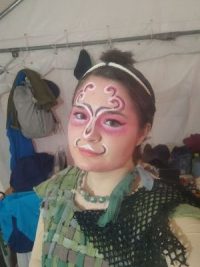
First, the absence of walls enclosing the stage like a cage offered a new sense of freedom, allowing us to explore the space beyond traditional stage boundaries. The Ramayana offered the audience a full 360° experience. The actors could move behind the spectators, or even through them, making certain scenes more vivid and immersive. The monkeys’ truck (dekotora) also emerged from behind the audience, creating a surprise effect. This feeling of freedom reached its peak during the battle of Lanka, where the fights extended all the way to the trees, some fifty meters behind the stage.
The backstage area didn’t allow us to hide from view, which created a sort of ongoing game of hide-and-seek. It meant we had to stay in character even when offstage. So if a spectator was curious enough to glance at the backstage, they could be rewarded with the discovery of secret moments. For example, when Rama dances to pray to the god of the sea (Bonten), the monkeys watch him discreetly offstage as he performs his ritual. This transparency gave a much stronger sense of realism, along with the satisfying feeling of having witnessed a hidden scene that others might not have noticed.
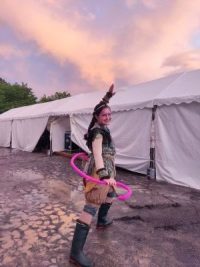
Performing outdoors also brings its share of unpredictability: rain, wind, and dust can affect both the actors and the props. But I believe these very accidents highlight the unique and ephemeral nature of theatre. The true richness of live performance lies in a singular and intimate sharing with a small group of people. These unexpected events elevate those shared moments, giving them a more authentic dimension.
As I mentioned earlier, performing outdoors allows nature to become an actor in the performance. Throughout the entire festival, I had the chance to experience a wide range of weather conditions. I was particularly apprehensive about the idea of performing in the rain. I was afraid I wouldn’t be able to fully immerse myself in the role—that the water would keep me from keeping my eyes open, or worse: that I might get sick, slip, or injure myself.
And yet, once I was immersed in the action, something quite unexpected happened within my body. I was soaked, the water formed a cold veil over my skin, but inside, my blood felt like it was boiling. That sensation, strange at first, gradually became truly pleasant. It was as if my body had transformed into an onsen (hot spring) at the perfect temperature. While I had feared I wouldn’t be able to get into character, the rain, against all expectations, supported me—connecting me to the natural conditions real monkeys might face. And beyond the physical experience, I believe the rain added to the epic intensity of the play. I suddenly found myself thinking: “Let it rain, let it storm, let it hail—we will fight to save Princess Sita! And nothing will stop us!”.
Performing outdoors also gave me the feeling that the audience wasn’t the only one listening to the story of the Ramayana. I felt that the trees, the animals, the grass, the stars, and even the Moon were sharing the moment with us. At the end of the battle, when the monkeys lose their advantage to Indrajit, I came to lean against a tree. The position was difficult to hold, its roots made the ground uneven, and if it had rained, it became slippery. Yet, when I felt my strength waning, it was as if the tree was encouraging me, transmitting its energy to me like a silent ally.
In my report on Kojiki – Yamata no Orochi, I spoke about the SPAC actors’ ability to sense the presence of the dead and invisible forces. I hadn’t been able to experience that during Yamata no Orochi, but it happened to me during a performance of the Ramayana. One day, a large number of plane tree samaras began falling from the sky, and the wind played with them like a juggler. I was on stage left, near the instruments, watching the first scene. I was like a monkey watching over Sita as she gathered flowers, hidden in my tree. The samaras began to fall onto the stage and, as they reflected the light of the spotlights, they transformed into a golden rain. When Sita reached out to pick a flower, the golden flakes parted before her and then swirled around her, as if a divine hand had come to embrace her. It was truly beautiful. Even though the samaras made it harder for the actors to perform, I had never witnessed anything like that. In that moment, I felt that an invisible force wanted to tell the story of the Ramayana with us. Perhaps Rama himself had returned to relive his story through our performance. Throughout the play, the rain of samaras accompanied us, and the wind shaped it differently for each scene. When Hanuman reached Lanka to speak with Sita, the samaras resembled the petals of a garden, fluttering and reflecting light like shards of moonlight. During the battle at Lanka, this golden rain turned into ashes and sparks of fire. And in the scene of Sita’s disappearance, I saw this golden petal rain slip into the crevice, as if to accompany her on her journey back to the earth.
It was a truly enriching experience to perform alongside so many actors of all ages gathered on stage. Miyagi explained to me that this production represented a kind of return to the roots, by recreating the same creative process that the company used in its early days. Everyone was able to contribute something of their own, building together a true collective work. The Ramayana felt like a vast tapestry, to which each person added a small embroidered motif to create the full picture. The most experienced actors in the company passed down their know-how, their methods, and their energy to the younger ones, like Kazuha Nishide and me. This return to origins was also reflected in the reuse of music from Electra, a production presented in 1995 (thirty years ago). To that music, we all played the djembe together, in unison. It was a powerful moment—a beautiful metaphor for the spirit of SPAC: a single voice carried by a multitude of performers, a theatre rooted in transmission, collective effort, and the richness of diversity.
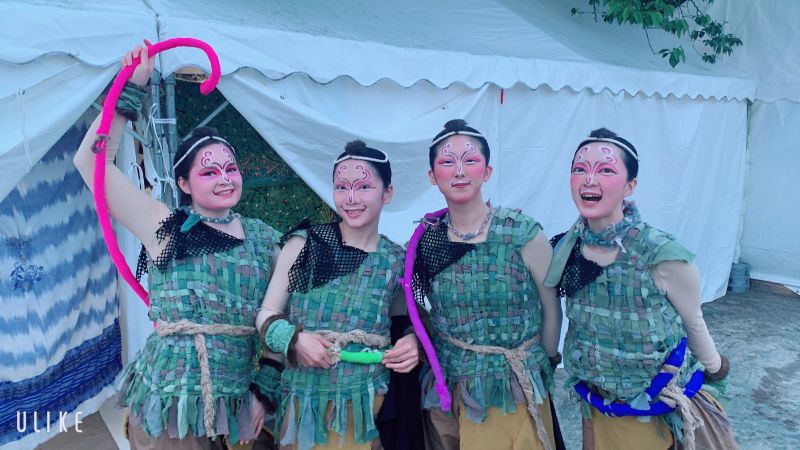
There was also something quite amusing about the fact that the younger actors were given the roles of monkeys. I had read that, in Noh theatre, the very first roles traditionally given to young performers are also… monkey roles. I found this parallel really fascinating. It, too, evoked a kind of return to origins—but this time, to the origins of theatre itself.
As I write these lines, I’m on the plane back to France (and I must admit, it’s not easy to write with all this turbulence). I want to thank all the members of SPAC from the bottom of my heart for allowing me to live such an exceptional experience. The SPAC actors are all remarkable artists. I learned so much from them, especially about how to use my body in performance. In many ways, this production marked a series of “firsts” for me. It was a beautiful human adventure. I am deeply grateful to them for welcoming me with such kindness, despite our differences and my struggles to express myself in Japanese. I had so much fun throughout the entire creation process, and every performance was a moment of pure joy.
Thank you for your warm welcome, your generosity, and your kindness. I will never forget what we shared together!
See you soon!
Janelle RIABI
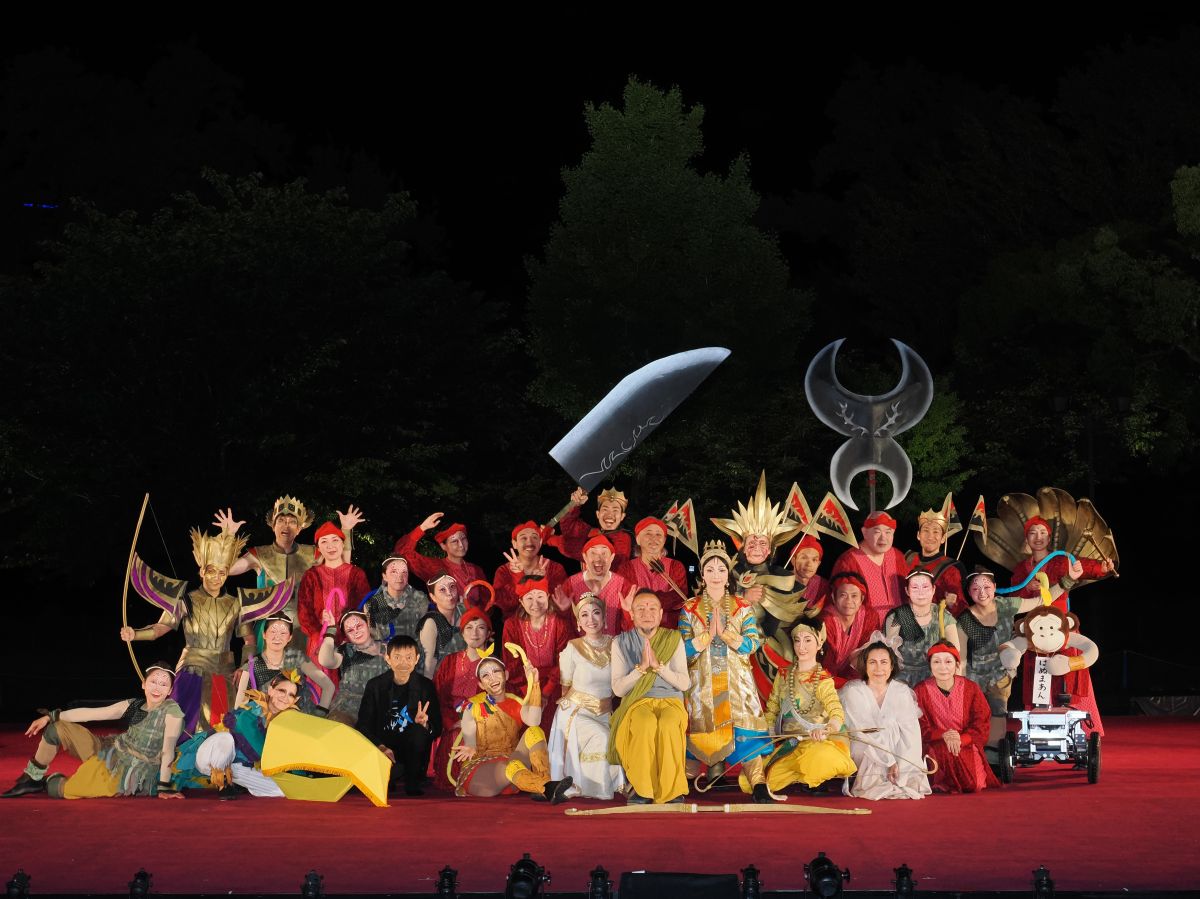
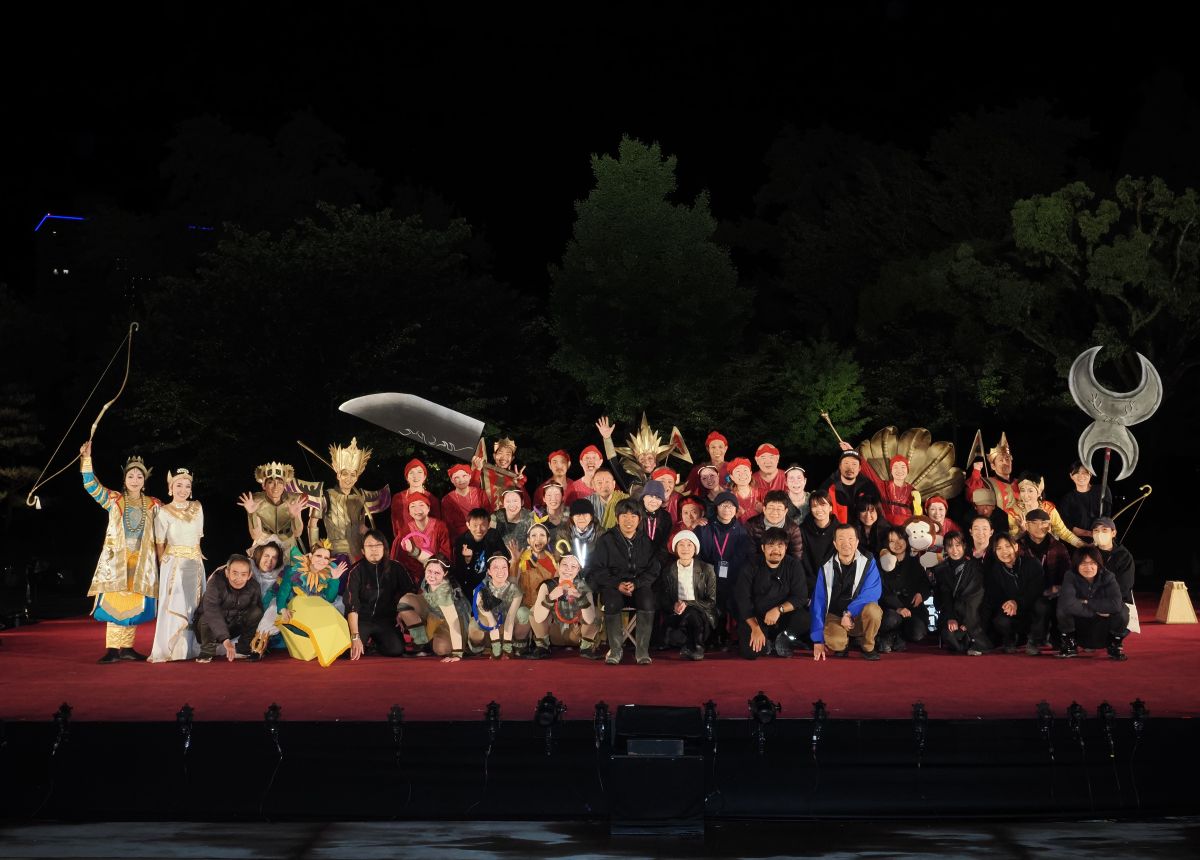
Previous blogs
vol.1
vol.2
vol.3
vol.4
Ramayana
https://festival-shizuoka.jp/en/program/ramayana/
Dates: 29 April at 18:45, 2 May at 18:45, 3 May at 18:45, 4 May at 18:45, 5 May at 18:45, 6 May at 18:45
Venue: Momijiyama Garden Square, Sumpu Castle Park
Duration: Approx 90minutes
Language: In Japanese with English surtitles
*Information about surtitles in other languages will be announced later.
Seat: Reserved-seating
Original work: Valmiki
Structure and direction: MIYAGI Satoshi